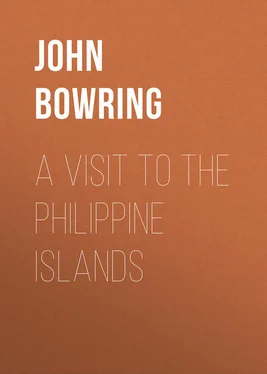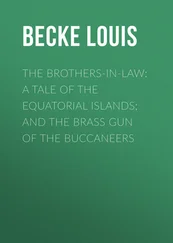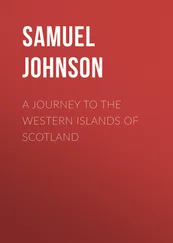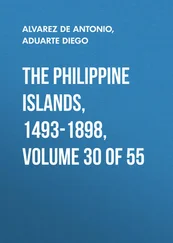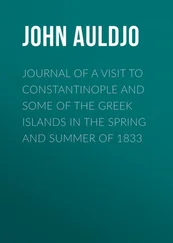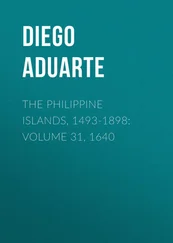John Bowring - A Visit to the Philippine Islands
Здесь есть возможность читать онлайн «John Bowring - A Visit to the Philippine Islands» — ознакомительный отрывок электронной книги совершенно бесплатно, а после прочтения отрывка купить полную версию. В некоторых случаях можно слушать аудио, скачать через торрент в формате fb2 и присутствует краткое содержание. Жанр: foreign_antique, foreign_prose, на английском языке. Описание произведения, (предисловие) а так же отзывы посетителей доступны на портале библиотеки ЛибКат.
- Название:A Visit to the Philippine Islands
- Автор:
- Жанр:
- Год:неизвестен
- ISBN:нет данных
- Рейтинг книги:3 / 5. Голосов: 1
-
Избранное:Добавить в избранное
- Отзывы:
-
Ваша оценка:
- 60
- 1
- 2
- 3
- 4
- 5
A Visit to the Philippine Islands: краткое содержание, описание и аннотация
Предлагаем к чтению аннотацию, описание, краткое содержание или предисловие (зависит от того, что написал сам автор книги «A Visit to the Philippine Islands»). Если вы не нашли необходимую информацию о книге — напишите в комментариях, мы постараемся отыскать её.
A Visit to the Philippine Islands — читать онлайн ознакомительный отрывок
Ниже представлен текст книги, разбитый по страницам. Система сохранения места последней прочитанной страницы, позволяет с удобством читать онлайн бесплатно книгу «A Visit to the Philippine Islands», без необходимости каждый раз заново искать на чём Вы остановились. Поставьте закладку, и сможете в любой момент перейти на страницу, на которой закончили чтение.
Интервал:
Закладка:
The better class of houses in Manila are usually rectangular, having a court in the centre, round which are shops, warehouses, stables and other offices, the families occupying the first floor. Towards the street there is a corridor which communicates with the various apartments, and generally a gallery in the interior looking into the patio (court). The rooms have all sliding windows, whose small panes admit the light of day through semi-transparent oyster-shells: there are also Venetians, to help the ventilation and to exclude the sun. The kitchen is generally separated from the dwelling. A large cistern in the patio holds the water which is conveyed from the roofs in the rainy season, and the platform of the cistern is generally covered with jars of flowering plants or fruits. The first and only floor is built on piles, as the fear of earthquakes prevents the erection of elevated houses. The roofing is ordinarily of red tiles.
The apartments, as suited to a tropical climate, are large, and many European fashions have been introduced: the walls covered with painted paper, many lamps hung from the ceiling, Chinese screens, porcelain jars with natural or artificial flowers, mirrors, tables, sofas, chairs, such as are seen in European capitals; but the large rooms have not the appearance of being crowded with superfluous furniture. Carpets are rare – fire-places rarer.
Among Europeans the habits of European life are slightly modified by the climate; but it appeared to me among the Spaniards there were more of the characteristics of old Spain than would now be found in the Peninsula itself. In my youth I often heard it said – and it was said with truth – that neither Don Quixote nor Gil Blas were pictures of the past alone, but that they were faithful portraits of the Spain which I saw around me. Spain had then assuredly not been Europeanized; but fifty years – fifty years of increased and increasing intercourse with the rest of the world – have blotted out the ancient nationality, and European modes, usages and opinions, have pervaded and permeated all the upper and middling classes of Spanish society – nay, have descended deep and spread far among the people, except those of the remote and rural districts. There is little now to distinguish the aristocratical and high-bred Spaniard from his equals in other lands. In the somewhat lower grades, however, and among the whole body of clergy, the impress of the past is preserved with little change. Strangers of foreign nations, principally English and Americans, have brought with them conveniences and luxuries which have been to some extent adopted by the opulent Spaniards of Manila; and the honourable, hospitable and liberal spirit which is found among the great merchants of the East, has given them “name and fame” among Spanish colonists and native cultivators. Generally speaking, I found a kind and generous urbanity prevailing, – friendly intercourse where that intercourse had been sought, – the lines of demarcation and separation between ranks and classes less marked and impassable than in most Oriental countries. I have seen at the same table Spaniard, mestizo and Indian – priest, civilian and soldier. No doubt a common religion forms a common bond; but to him who has observed the alienations and repulsions of caste in many parts of the Eastern world – caste, the great social curse – the blending and free intercourse of man with man in the Philippines is a contrast well worth admiring. M. Mallat’s enthusiasm is unbounded in speaking of Manila. “Enchanting city!” he exclaims; “in thee are goodness, cordiality, a sweet, open, noble hospitality, – the generosity which makes our neighbour’s house our own; – in thee the difference of fortune and hierarchy disappears. Unknown to thee is etiquette. O Manila! a warm heart can never forget thy inhabitants, whose memory will be eternal for those who have known them.”
De Mas’ description of the Manila mode of life is this: – “They rise early, and take chocolate and tea (which is here called cha ); breakfast composed of two or three dishes and a dessert at ten; dinner at from two to three; siesta (sleep) till five to six; horses harnessed, and an hour’s ride to the pasco ; returning from which, tea, with bread and biscuits and sweets, sometimes homewards, sometimes in visit to a neighbour; the evening passes as it may (cards frequently); homewards for bed at 11 P.M.; the bed a fine mat, with mosquito curtains drawn around; one narrow and one long pillow, called an abrazador (embracer), which serves as a resting-place for the arms or the legs. It is a Chinese and a convenient appliance. No sheets – men sleep in their stockings, shirts, and loose trousers ( pajamas ); the ladies in garments something similar. They say ‘people must always be ready to escape into the street in case of an earthquake.’” I certainly know of an instance where a European lady was awfully perplexed when summoned to a sudden flight in the darkness, and felt that her toilette required adjustment before she could hurry forth.
Many of the pueblos which form the suburbs of Manila are very populous. Passing through Binondo we reach Tondo, which gives its name to the district, and has 31,000 inhabitants. These pueblos have their Indian gobernadorcillos. Their best houses are of European construction, occupied by Spaniards or mestizos, but these form a small proportion of the whole compared with the Indian Cabánas . Tondo is one of the principal sources for the supply of milk, butter, and cheese to the capital; it has a small manufacturing industry of silk and cotton tissues, but most of the women are engaged in the manipulation of cigars in the great establishments of Binondo. Santa Cruz has a population of about 11,000 inhabitants, many of them merchants, and there are a great number of mechanics in the pueblo. Near it is the burying-place of the Chinese, or, as they are called by the Spaniards, the Sangleyes infieles .
Santa Cruz is a favourite name in the Philippines. There are in the island of Luzon no less than four pueblos, each with a large population, called Santa Cruz, and several besides in others of the Philippines. It is the name of one of the islands, of several headlands, and of various other localities, and has been carried by the Spaniards into every region where they have established their dominion. So fond are they of the titles they find in their Calendar, that in the Philippines there are no less than sixteen places called St. John and twelve which bear the name of St. Joseph; Jesus, Santa Maria, Santa Ana, Santa Caterina, Santa Barbara, and many other saints, have given their titles to various localities, often superseding the ancient Indian names. Santa Ana is a pretty village, with about 5,500 souls. It is surrounded with cultivated lands, which, being irrigated by fertilizing streams, are productive, and give their wonted charm to the landscape – palms, mangoes, bamboos, sugar plantations, and various fruit and forest trees on every side. The district is principally devoted to agriculture. A few European houses, with their pretty gardens, contrast well with the huts of the Indian. Its climate has the reputation of salubrity.
There is a considerable demand for horses in the capital. The importation of the larger races from Australia has not been successful. They were less suited to the climate than the ponies which are now almost universally employed. The Filipinos never give pure water to their horses, but invariably mix it with miel (honey), the saccharine matter of the caña dulce , and I was informed that no horse would drink water unless it was so sweetened. This, of course, is the result of “education.” The value of horses, as compared with their cost in the remoter islands, is double or treble in the capital. In fact, nothing more distinctly proves the disadvantages of imperfect communication than the extraordinary difference of prices for the same articles in various parts of the Archipelago, even in parts which trade with one another. There have been examples of famine in a maritime district while there has been a superfluity of food in adjacent islands. No doubt the monsoons are a great impediment to regular intercourse, as they cannot be mastered by ordinary shipping; but steam has come to our aid, when commercial necessities demanded new powers and appliances, and no regions are likely to benefit by it more than those of the tropics.
Читать дальшеИнтервал:
Закладка:
Похожие книги на «A Visit to the Philippine Islands»
Представляем Вашему вниманию похожие книги на «A Visit to the Philippine Islands» списком для выбора. Мы отобрали схожую по названию и смыслу литературу в надежде предоставить читателям больше вариантов отыскать новые, интересные, ещё непрочитанные произведения.
Обсуждение, отзывы о книге «A Visit to the Philippine Islands» и просто собственные мнения читателей. Оставьте ваши комментарии, напишите, что Вы думаете о произведении, его смысле или главных героях. Укажите что конкретно понравилось, а что нет, и почему Вы так считаете.
